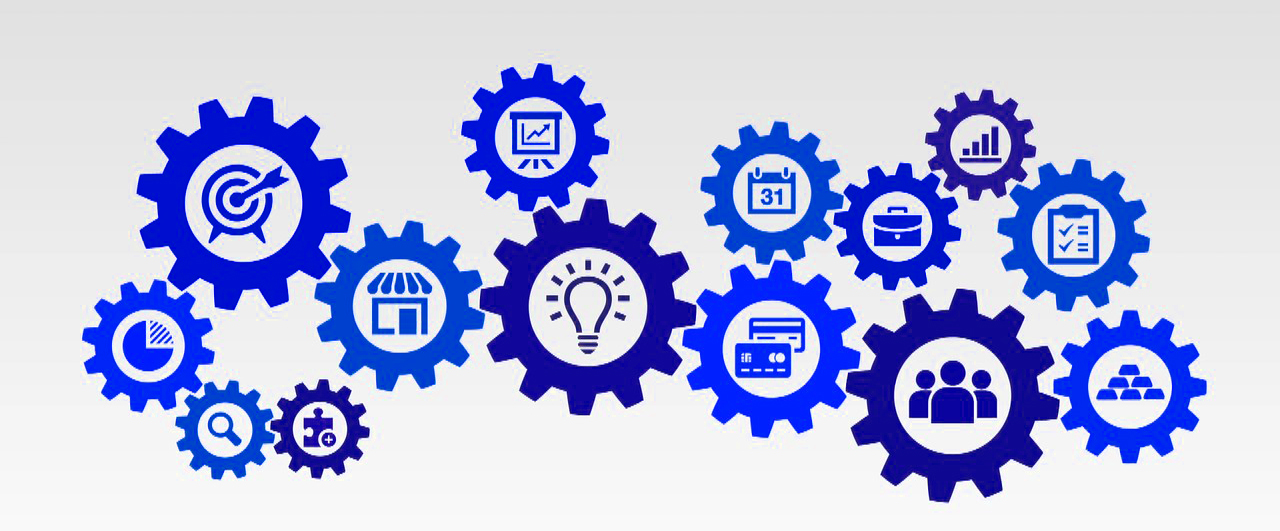It may be difficult to implement continuous improvement into your business. Business is extremely complicated with parts that are always moving. Complexity, layers of management, time constraints, and lack of prioritization are areas that can get in the way of implementing continuous improvement.
Due to this complexity, identifying areas for improvement may be difficult.
Where to start, whom to engage, what to improve, and how to prioritize can lead to a lack of action, a lack of alignment, and utter frustration.
Continuous improvement has been perfected in areas like manufacturing environments. In real time, different areas in your business can be indicators of continuous improvement. Look for areas such as the reduction in waste, the organization of a work area, reduced defects and perfecting the flow of goods in manufacturing. The results are visible, transparent, immediate and proven.
Using Continuous Improvement Principles
With a business that never seems to stop moving, it can be overwhelming to even think of where to implement continuous improvement.
When considering continuous improvement for your business, consider these two principles.
The first principle is the acronym DOWNTIME.
DOWNTIME identifies the 8 areas of waste in business:
- Defects
- Overproduction
- Waiting
- Not fully utilizing talent
- Transportation
- Inventory
- Motion
- Excess processing
This process can and will reduce waste in your business with successful implementation.
Use this principle to answer questions like these:
Are we overproducing goods? What are we throwing out every hour?
Do I have employees standing around during cycle times? What can they be doing for those idle 10 or 20 minutes? What other areas can be improved with the money I save by correcting this issue?
Are we processing too much? Are we producing the right units at the right time and for the right customers? Or are we overproducing?
Why are we producing so many defects? Is there something wrong with the machine? Do we need an upgrade? Do we need better training for our staff?
The second continuous improvement principle is the 5S method. When you follow 5S you will be able to do the following to improve your processes:
- Sort: get rid of anything that isn’t needed
- Set in order: organize your processes so they can be streamlined
- Shine: clean your work areas so you can clearly see what is going on and what can be improved
- Standardize: keep your processes as consistent as possible
- Sustain: write and implement procedures that promote long-term success
The deployment of 5S happens immediately when your staff buys in. Empower them to follow this principle. Have your leaders incorporate effective accountability tools like GEMBA walks to ensure that your efforts are sustainable. A gemba (and sometimes genba) walk is the term used to describe the personal observation of work. Here, leaders will see what is going on in real-time. They will be able to ask questions about what they observe.
In this example, you are ensuring that 5S is being followed by reviewing the work space and improvement areas on a consistent basis (remember the fifth S: Sustain!).
Applying Continuous Improvement
Businesses are complicated. Applying these continuous improvement techniques to the business planning and execution process is a monumental task. After this is done, these efforts will make your business plan come to life. This is what we at
STUCK Coaching have been perfecting over the past 10 years.
With the right tools, you can assess, plan, deploy and execute your plans while getting all employees on the same page with a culture of continuous improvement. The STUCK Breakthrough Strategies process applies the fundamental principles of lean manufacturing to the business planning and execution process.
[bctt tweet=”With the right tools, you can assess, plan, deploy and execute your plans while getting all employees on the same page with a culture of continuous improvement.” username=”STUCKCoaching”]
The first step with applying these continuous improvement principles is creating a Single-Page Plan. This is the crucial first step as it will get your team on the same page.
The purpose of the plan is to make it possible for your business to get from its current state to its desired future state. It includes high level goals (called Strategic Deployment Initiatives) for the 5 pillars of business: Growth, Customer Delight, Innovation, Productivity, and Great Place to Work.
The productivity pillar deals specifically with setting goals related specifically to continuous improvement. Take advantage of this pillar. Use it to supplement and accelerate the growth of the other pillars.
Communicate the plan to your staff and have them take action on it. Encourage employee buy in to the plan. Assign SMART goals to employees that will align their actions to continuous improvement.
Then assign value-add action items, called Must Do/Can’t Miss items, that are relevant and support your continuous improvement goals.
Sustain this Process
Don’t let creating and executing this process distract you from creating a culture of continuous improvement.
Let your business thrive on this culture by letting it live through your staff. Engage and educate your employees by introducing them to these principles and allowing them to apply them.
Then, have your staff help you identify areas of improvement. These areas of improvement should relate to the Must Do/Can’t Miss initiatives that are aligned to the Single-Page Plan. If it’s not part of the plan, perhaps it simply is wasteful and should not be done.
It is your job to sustain this culture through the use of these tools. When your employees are engaged, accountable, and responsible, they will really help you sustain this culture. Whether you are in or out of the office, your employees can take your company to the next level.
[bctt tweet=”When your employees are engaged, accountable, and responsible, they will really help you sustain this culture.” username=”STUCKCoaching”]
The tools that we created during our journey of continuous improvement are available for other businesses to use. Our cloud-based software, the
STUCK Breakthrough Strategies Platform, houses many tools to help promote a culture of growth, empowerment and continuous improvement.
With this software, businesses can organize their work, update their Must Do/Can’t Miss items in real time, and report out on their performance. The owner can access the STUCK Breakthrough Strategies Platform while they are out. This serves as the secret sauce to be able to work on your business vs. in your business.
Let’s Start
To see how the Platform can help your business grow,
contact us for a free demonstration of the software.
For more tips on how to improve your business, follow STUCK Coaching on
LinkedIn,
Twitter, and
YouTube.



Your article helped me a lot, is there any more related content? Thanks!
Thank you for your sharing. I am worried that I lack creative ideas. It is your article that makes me full of hope. Thank you. But, I have a question, can you help me?
Thank you for your sharing. I am worried that I lack creative ideas. It is your article that makes me full of hope. Thank you. But, I have a question, can you help me?
Your website is an outstanding resource for everyone interested in learning more about related topics.